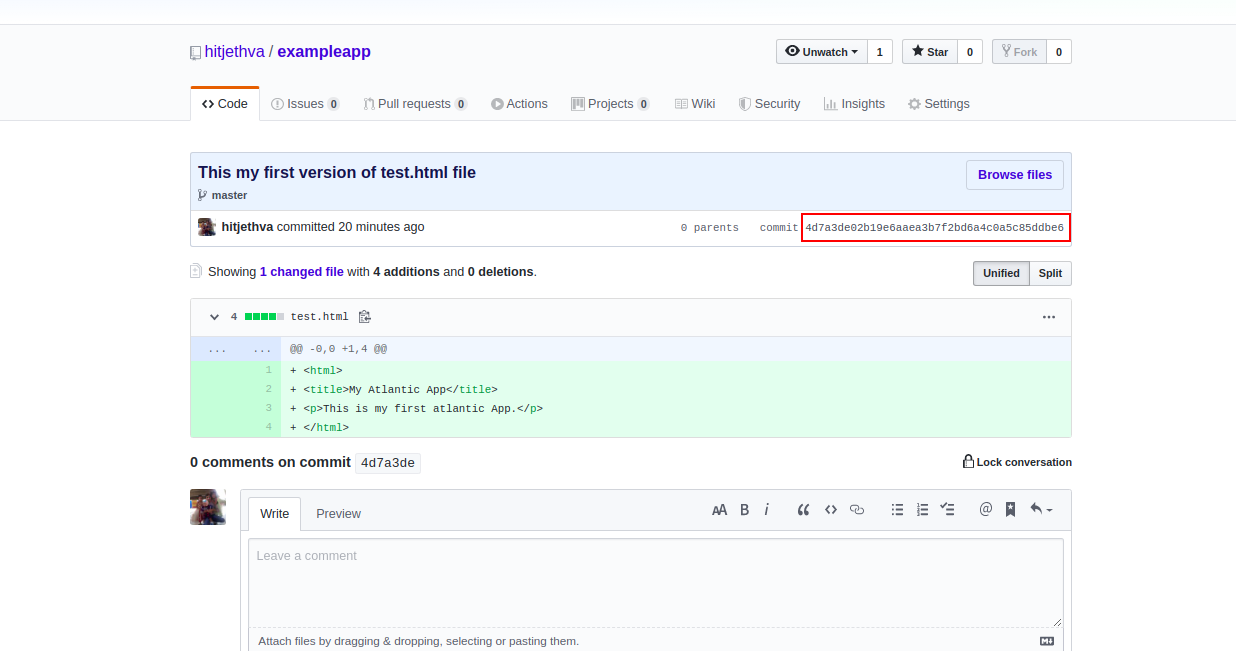

- Git checkout commit how to#
- Git checkout commit update#
- Git checkout commit Patch#
- Git checkout commit software#
However, a situation may occur with a git repository that prevents you from switching between entities. That makes it easy for developers to work on the same code simultaneously.Īmong its many commands, the one you will be using very often is certainly git checkout, as it allows you to navigate between branches or other entities in Git.
Git checkout commit software#
It allows software developers to track different code modifications by storing all the various versions in a unique database. Note that both git checkout - and git checkout will give additional instructions if you have committed changes while HEAD was detached.Git is one of the most useful and widely utilized tools for both developers and development teams.

With either method, you can now continue adding and committing your work as before: your next changes will be tracked on. Grab the branch name that suits your needs. You see a list of existing local branches. In that case, here are 2 simple, easily remembered steps. But what if your situation is slightly different: say you have restarted Bash then found yourself with HEAD detached. The quick approach solves the OP's question. More methodical solution (2-steps, but memorable)

it's useful when you actually want HEAD to return to where it was). Syntax and the applicable cases are a pretty good match (e.g. Mnemonic: this approach is a lot like using cd - to return to your previously visited directory. See note on outcomes at the end of this answer. Confirm it's the branch you want.īrief explanation: this command will move HEAD back to its last position. This schema illustrates which command does what.Īs you can see there, reset & checkout modify the HEAD. # The can be any commit(s) or commit range # Add a new commit with the undo of the original one.
Git checkout commit Patch#
The revert command will "undo" any changes made in the given commit.Ī new commit with the undo patch will be committed while the original commit will remain in history as well.
Git checkout commit update#
# in order to be able to update the code. # is not pointing to the latest so you will need to checkout branch # Doing so will result in a `detached HEAD` which mean that the `HEAD` This command will checkout to a given commit.Īt this point, you can create a branch and start to work from this point on. This will checkout the new branch pointing to the desired commit. Git checkout HEAD~X // x is the number of commits to go back
Git checkout commit how to#
On the command line, it will look like this - SHA-1 instead of the branch name since the HEAD is not pointing to the tip of the current branch:Ī few options on how to recover from a detached HEAD: If you are not on the latest commit - meaning that HEAD is pointing to a prior commit in history it's called detached HEAD. git/HEAD and it contains the 40 bytes SHA-1 of the current commit. There can only be a single HEAD at any given time (excluding git worktree). HEAD is simply a reference to the current commit (latest) on the current branch. Before answering, let's add some background, explaining what this HEAD is.


 0 kommentar(er)
0 kommentar(er)
